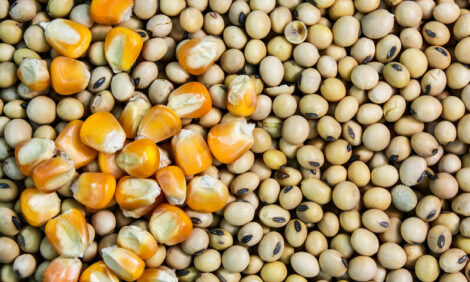



Fed Cattle Prices are Stable Compared to Early 2013
BRAZIL - The fed cattle trades continued in a slow pace at the end of the first fortnight of March, according to CEPEA, The Centre of Applied Economics.Prices have not changed significantly and the aspects that define this scenario were also the same observed in February and January.
The difference between the minimum and the maximum values of the price range is more significant. In general, trades were closed based on the specific characteristics of batches or because of players’ needs, or even due to the urgency of purchasers or sellers.
The supply of slaughter-ready animals was not significant in early March. Fed cattle farmers continued discouraged with prices and, due to good pasture conditions, they postpone trades, expecting higher prices. As for the demand, slaughterhouses continued prudent, because the pace of beef trades in the wholesale market has not been encouraging.
In São Paulo State, in the partial of March, the ESALQ/BM&FBovespa Index for fed cattle upped 0.45 per cent, closing at 97.94 reals or 49.39 dollars on March 15.
In the swine market, the exemption of PIS (Social Integration Program), Cofins (Contribution to Social Security Financing) and IPI (a federal excise tax on the manufacturing of goods) of products of the basic food basket announced on March 8 by the Brazilian government may reduce meat prices to consumers, which tends to encourage the consumption.
Slaughterhouses were already exempted of PIS/Cofins – for beef since 2010 and for broiler and pork since 2011 – with the purpose to reduce the tax burden in the retail market.
Among positive aspects of this measure, there is the fact that the reduction of meat prices may result in higher consumption. On the other hand, beef and even broiler are most commonly preferred by Brazilians. In this scenario, the Brazilian Slaughterhouse Association (Abrafrigo) estimates that beef, a strong competitor for pork, may become 10 to 12 per cent cheaper, which may affect pork demand.
As for the poultry sector, taxes exemption on food staples in Brazil also cheapen meats. For producing sectors, impacts may be positive because it pushes up consumption. However, prices are also linked to supply.
In the poultry sector, the segment of animal production has been adjusting gradually supply to demand. Chicken production in the second semester of 2012 decreased 5.6 per cent in relation to the same period of 2011, and broiler prices continue at high levels.
On the other hand, animal production for slaughter seems to be increasing. Demand for chicks has increased in this early 2013.
TheCattleSite News Desk


